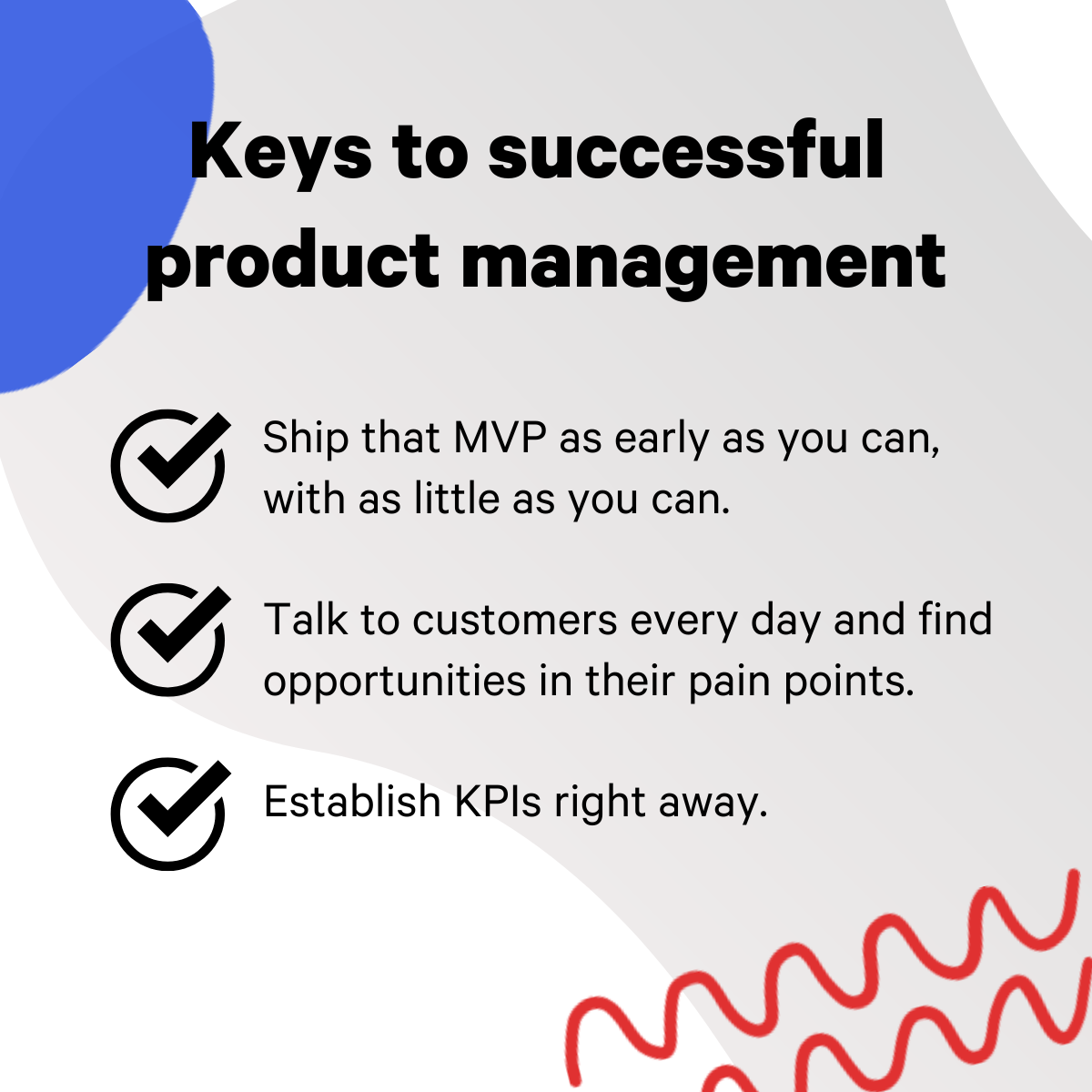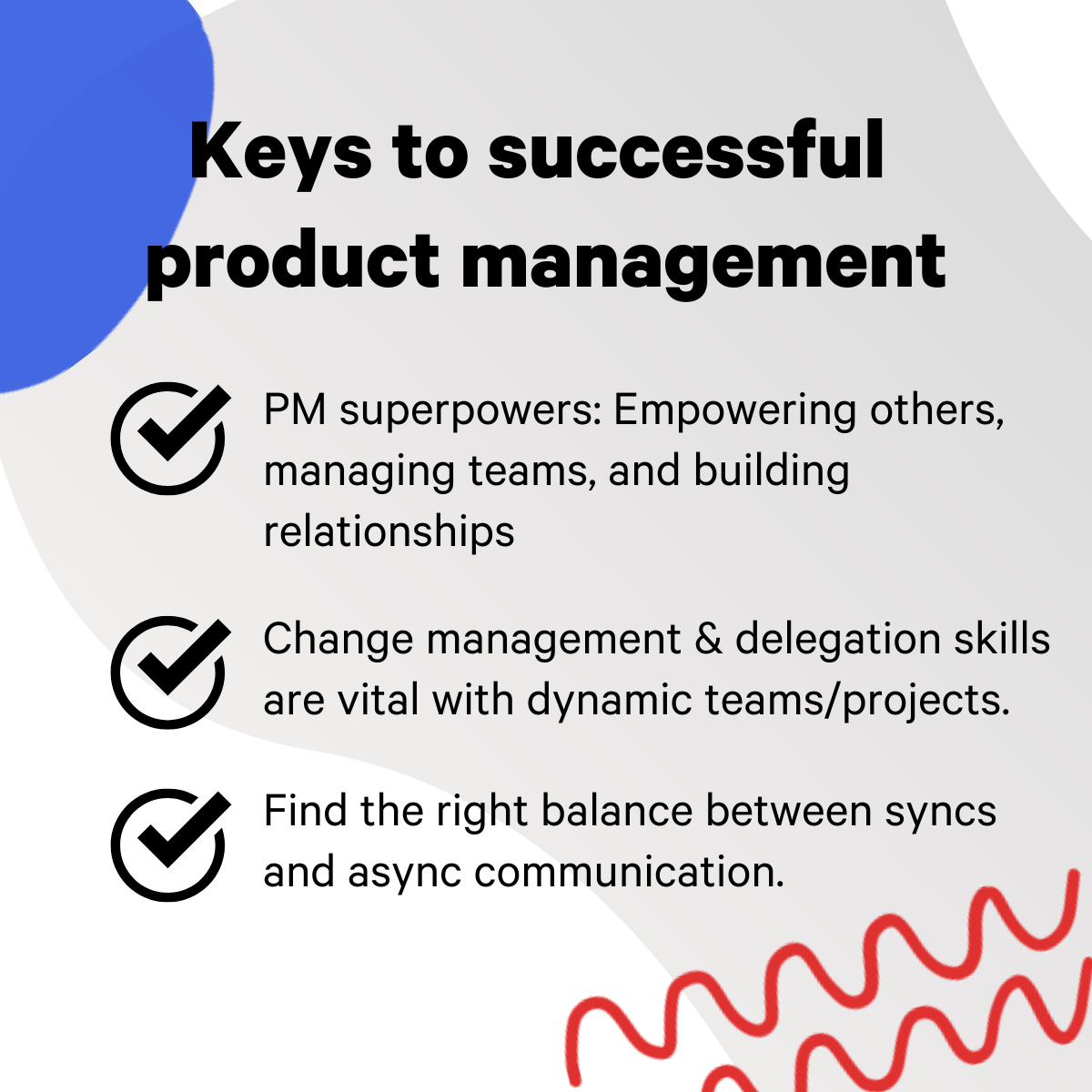We had the pleasure of hosting our first Twitter Ask Me Anything (AMA) event last week, to share what our Product Management team knows about product strategy, leading successful teams, and de-risking software products. Our audience challenged the team on all things product strategy, research, go-to-market, and effective teamwork. All the content and our suggestions might be useful to our newsletter subscribers and larger community, so we summed up the Q&A here. Enjoy!
I’m overseeing my first MVP effort. What tips would you give me?
- Ship that MVP as early as you can, with as little as you can. Ask, “What is the smallest thing of value we can ship for this?” and then see if you can make it even smaller.
- Invalidating your idea with a clickable prototype is less painful than doing so with working software.
- There isn’t a one-size-fits all way to structure your teams and process. And, whatever you decide will likely change throughout the course of a project.
How do I uncover product-market fit with my team instead of just following my stakeholders “gut instinct?”
- Talk to customers every day. Let them speak freely and expansively on their pain points.
- Listen for the opportunities in those pain points. Find where they intersect with your business objectives.
- Test multiple solutions and use data to validate or invalidate that gut feeling.

How do you ensure your product meets the customer’s needs?
- Prototype and get user feedback to validate the problem and assumption.
- Gather qualitative feedback through interviews or usability tests.
- Use quantitative product metrics such as acquisition, retention, satisfaction, and S/T scores to see if you’re hitting the mark.
We are 3 months in, and have 2 months to go until our “launch date” but I’m worried we are building the wrong thing. What should we do?
- Raise this concern with the team and key stakeholders right away. It’s better to bring visibility to this issue than bury it and hope that it goes away.
- Brainstorm ways that you can test the underlying assumptions of what you’re building through user interviews, user testing, an internal launch, or a beta waitlist signup.
- Align with stakeholders, adjust project timelines, and continue to move forward with test-driven development.
As a PM, what is my role and what are the biggest ways I can reduce risk?
- Prioritizing clear understanding and alignment around what success means.
- Making sure your key stakeholders have the information they need to make decisions or work.
- Level setting expectations and making sure that stakeholders are aligned.
- Conducting an alpha and beta test period before you go live to work out any kinks.
I’m not a technical PM, how can I still support my engineering team?
- Your team doesn’t expect you to be the technical expert, so trust and confide in your team when making decisions.
- Understand the “why” and seek help on the “how” and “what”.
- Become the voice of the customer and be able to articulate the “why” of a business, product, or feature.
- Make sure the backlog is groomed, prioritized, and has acceptance criteria.
- Make sure that you get the engineering team’s input before you make commitments to your stakeholder or user.
- Making an effort to understand how your engineering team likes to work and develop a working level understanding.
How long before launch should I start Go-To-Market planning? How do I get started?
- It’ll depend on the size and maturity of the organization…
- Ideally, GTM planning should commence a quarter or two before launch and involve all of the key stakeholders to define what success looks like, call out dependencies, and things that need to be done.
I’ve never been a part of a Product Design Sprint. Does that mean I don’t have the skills to plan our product strategy?
- Anyone can participate in a Product Design Sprint! Planning a successful PDS doesn’t always equate to having a successful product strategy, either.

What communities or resources would you recommend for junior Product Managers looking to improve their skills?
Talk to your team. Learning what’s helpful for them, how they like to work, and what success looks like in their roles is so, so important.
Communities:
- Lenny Rachinsky newsletter
- Reforge
- Ken Norton’s Bring the Donuts
Books:
- Lean Startup, Eric Ries
- Continuous Discovery Habits, Teresa Torres
- Sprint, Jake Knapp
- Innovator’s Dilemma, Clayton Christensen
- Escaping the Build Trap, Melissa Perri
What tools do you use for building a roadmap? How do you keep it useful (vs. bloated and outdated)?
- Our tool of choice depends on the stage of a project. For greenfield MVPs we usually prefer Trello. For more robust projects, we use some combination of Jira, Linear, Confluence, Zenhub, and Github Projects.
- Continually meet with the team and stakeholders to groom and refine the backlog.
- Make sure that you’re not packing the backlog with everything possible. Things change. Priorities change. And so will your roadmap
What experiments do you run once you have a product to test?
- Usability testing
- A/B testing between different flows and product experiences.
- Acquisition, retention, and satisfaction to help identify areas where the app is underperforming and where you can start to optimize.
How do you manage multiple layers of stakeholders, and a high-ranking one who only comes around from time to time?
- Understand their motivations, strategic objectives/pillars, and inter-organizational politics.
- Keep it simple as you move higher up the org.
- Be able to communicate what the problem is, quantify the impact, discuss solutions, discuss the pros & cons of each approach, and talk through the financial impact.
My team is fully remote across many time zones and it feels like we move slower because of it. How do I support communication without adding lots of meetings?
- Not everything requires a meeting or face-to-face communication.
- Ensure you have channels for async, transparent communication for everything from project concerns to quick huddles to get unstuck.
- Daily syncs and stand-ups can be done over slack or async to reduce meeting fatigue.
- Re-evaluate what meetings you’re having, what the goals are, who needs to attend, and why specific meetings were set in the first place.
When do you establish KPIs and how do I facilitate that?
- The best time to establish KPIs is yesterday. The second best time is today.
- Understand the vision, mission, and goals of the project:
- Are you trying to get more customers?
- Making money or saving money?
- Are you trying to improve the user experience generally?
- Understand which parts and experiences of your application contribute to your metrics and move you closer to achieving your mission and strategic objectives.
- Brainstorm different metrics to measure how successful different parts/experiences in your app.
- Collaborate with your developers/designers to get feedback.
Advice to your younger PM self??
- Being a PM is an ego-less job that often requires you to operate in the background. But your ability to empower others, establish trust, manage teams, and build relationships will make or break teams and projects
- Helping unblock your team is extremely valuable.
- Think of any misses not as failure, but as clarity about what NOT to do next time.
How do you manage growing teams and changing project dynamics?
- Learn to delegate effectively.
- Acknowledge that what worked in the past may not work in the future.
- Empower your developers to self-determine, organize, and work in a way that’ll be most effective.
How could I best manage a major roadmap upset (like a pandemic)?
- Flag the upset with stakeholders as soon as you know it’s going to impact the roadmap.
- Plan to run shorter cycles for a while.
- At the end of each cycle, review any new information on the situation to inform the next cycle. Plan for when to revisit the longer-term roadmap.
If you were to discover that the stakeholders are not aligned for whatever reason, how would you navigate?
Start by bringing the conversation back to the business fundamentals: What are our customers buying when they choose us? How do we best protect and grow that value proposition?
Can we help?
We hope some of the discussion helps you move your projects forward, and to chat with us 1-1 about your product or team, please reach out!